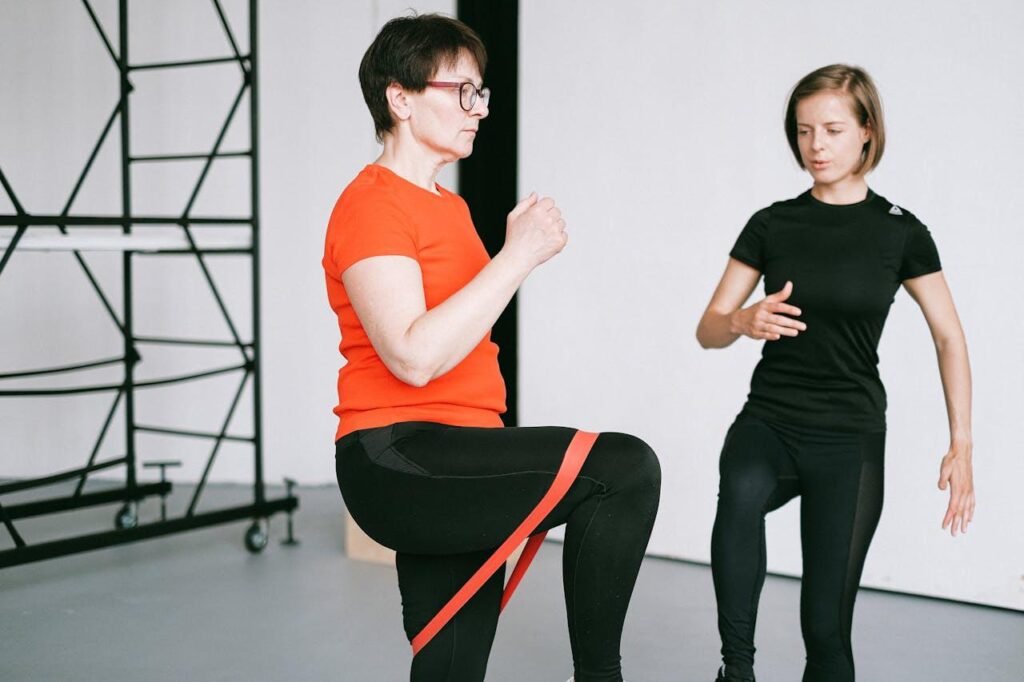Recovering from a leg injury requires more than just time and rest; it demands a strategic approach to ensure a full and strong recovery. Whether it’s a fracture, sprain, or surgical recovery, the path back to normal function can be long and difficult. A well-planned recovery process aids in strength restoration and prevention of future complications. This guide outlines five essential actions that are crucial in your journey to recovery, each designed to support your healing, enhance your mobility, and restore your quality of life.
Prioritize Rest and Elevation
In the early phases of recovering from a leg injury, rest and elevation are essential. Your body needs time to heal from an injury, and the first line of defense against more harm is to rest the injured leg. Elevation allows fluids to flow away from the injury site, which helps to minimize swelling, a typical problem with leg injuries. This procedure expedites the healing process and lessens discomfort. Maintaining the wounded leg raised above the level of the heart is crucial, particularly in the first days after the injury. To make this simpler and more comfortable, place pillows or cushions under the leg. Resting also entails avoiding unnecessary movement and pressure on the injured leg, which can aggravate the injury and prolong the recovery process.
Engage in Physical Therapy
The foundation of healing for everyone with a leg injury is physical therapy. Stretches and guided exercises are necessary to help the affected leg regain strength, flexibility, and function after the first period of rest. A certified physical therapist will create a customized rehabilitation program based on your unique injury and recuperation objectives. Exercises aimed at increasing joint stability, muscular strength, and range of motion are often included in this program. Regular physical treatment aids in the prevention of muscular atrophy and stiffness, which are frequent problems after extended periods of inactivity. Your therapist will also teach you the proper ways to prevent re-injury while engaging in daily activities. Frequent visits to a physical therapist will not only speed up the healing process but also guarantee that your leg regains its complete range of motion, enabling you to resume your regular activities confidently.
Implement Mobility Training Exercises
Incorporating mobility training exercises into your recovery plan is critical to regaining full function in the injured leg. The goal of these exercises is to improve the movement patterns that are essential for doing daily tasks, including bending, walking, and climbing stairs. In addition to increasing joint range of motion, mobility exercise fortifies the surrounding muscles, enhancing support and lowering the chance of further injury. Leg swings, hip flexor stretches, and ankle rotations are all effective exercises for restoring mobility after a leg injury. As your leg recovers, a well-designed mobility training program will gradually increase the level of effort, allowing you to develop both strength and flexibility. These exercises can help you heal more quickly and restore your independence, so it’s crucial to work with your physical therapist to integrate them into your regimen carefully.
Maintain a Balanced Diet
After suffering a leg injury, rehabilitation from the ailment depends heavily on nutrition. A well-balanced diet rich in essential nutrients can help tissues heal, reduce inflammation, and provide the energy required for rehabilitation exercises. Since proteins are the building blocks of muscle and tissue healing, they are very significant. Including fish, eggs, plant-based proteins, and lean meats in your diet will help you heal more quickly. Furthermore, for strong bones and a healthy immune system, vitamins and minerals like zinc, D, calcium, and C are essential. Nuts, dairy products, fruits, and vegetables all contain them. Maintaining proper hydration is crucial because water aids in many bodily processes, including tissue repair after injury.
Stay Patient and Consistent
A leg injury often takes time to heal. Therefore, persistence and patience are needed. It’s critical to realize that each phase of rehabilitation builds on the one before it and that pushing through the process too quickly might result in setbacks or re-harm. To get the greatest results possible, you must maintain consistency in your rest, physical treatment, mobility exercises, and diet. Maintaining this routine helps your leg recover correctly and develops the strength and resilience you need to prevent further injuries. Maintaining your composure and positivity during your recovery is crucial, as mental toughness greatly influences your ability to adhere to your treatment regimen. Celebrating small milestones along the way can help you stay motivated and focused on your goal of complete recovery.
Conclusion
Recovering from a leg injury involves a multifaceted approach that includes rest, physical therapy, mobility training, proper nutrition, and consistent effort. You can guarantee a robust and successful recovery by concentrating on these crucial areas, which will enable you to restore full function and confidently resume your regular activities. Additionally, maintaining a positive mindset and seeking support from healthcare professionals and loved ones can further enhance your recovery journey, ensuring that you overcome any challenges and achieve optimal results.



